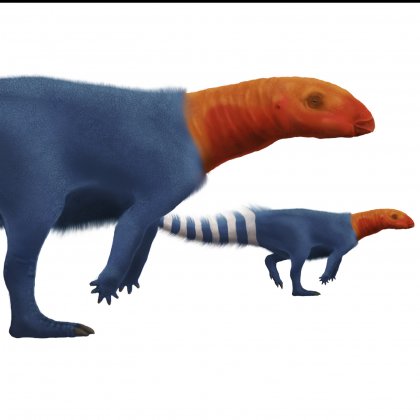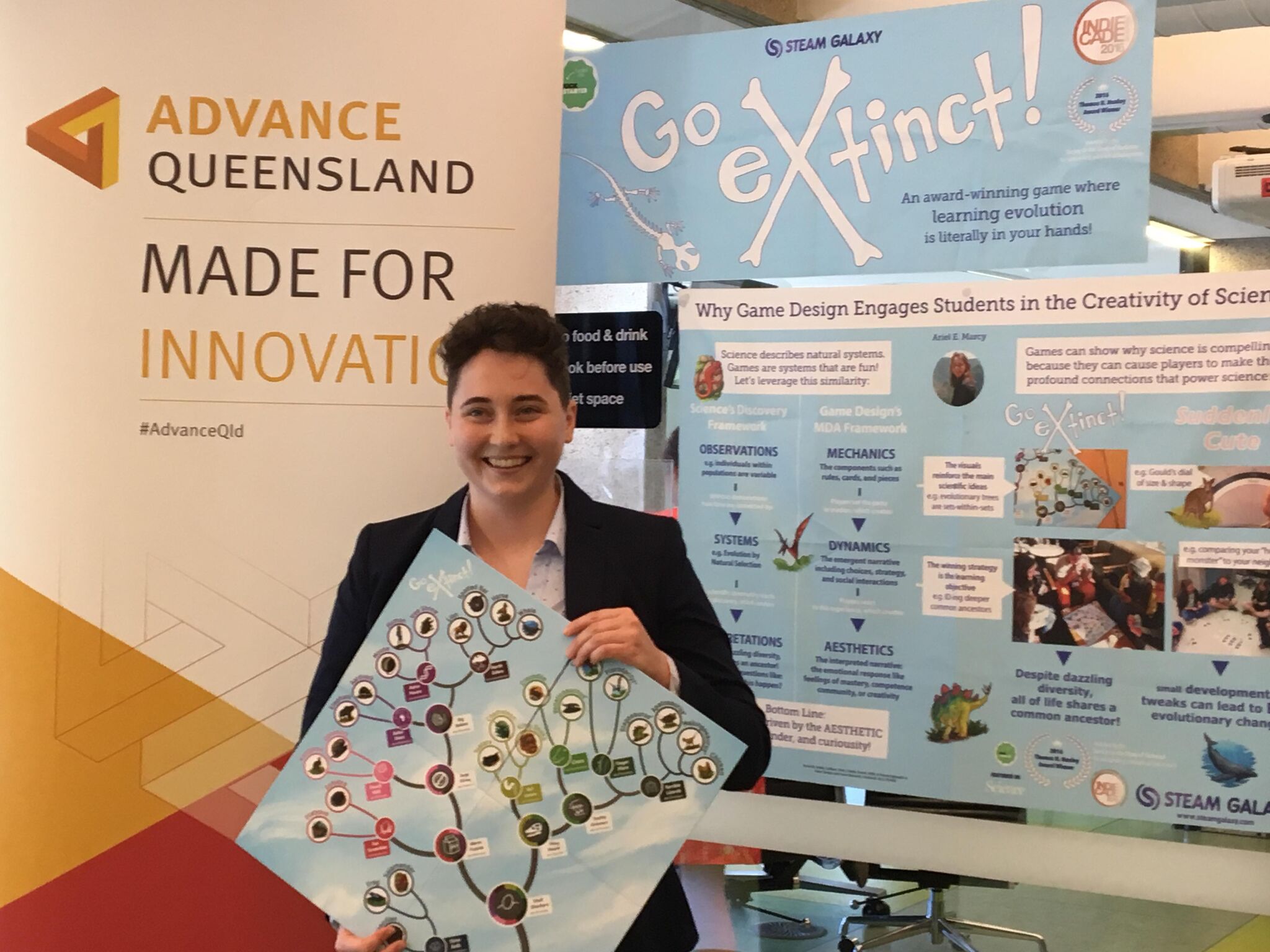
Octopus tree, rainbow serpent and demon duck of doom – they’re all on the cards for future scientists, thanks to a new game from a University of Queensland PhD student.
School of Biological Sciences student Ariel Marcy has created a free, design-it-yourself version of her award-winning Go Extinct! board game.
The original game centres around the evolutionary tree of land vertebrates (animals with a backbone that live on land), but a new online platform allows participants to create the same game around the evolutionary trees of different Australian animal and plant groups.
“It could be animals of the Great Barrier Reef, marsupials (pouched mammals such as kangaroos and Tasmanian devils), Australia’s ancient dinosaurs, our gorgeous flowering plants, or even venomous snakes,” Ms Marcy said.
“Children design the board by arranging the animals the way they’d like, while the platform ensures it stays scientifically accurate.
“Next, they pick which animals should represent the major groups on the tree. For example, in the megafauna tree you get to pick between the Thunder Bird or the Demon Duck of Doom to represent the dinosaur bird group.
“Finally, kids can make aesthetic decisions about the colours of the cards and board before printing them out for an epic science awesomeness board game session.
“Students could work together in teams in a classroom to create a game that fits with the lesson, or they could use the game to give context to the choices they make in their own research.”

The original game garnered awards and international press, and Ms Marcy said she hoped the design-it-yourself version would encourage more children to pursue science.
“As a female scientist, I think the message of creativity in science is under-sold – and it would resonate with a greater diversity of kids,” she said.
“There are so many reasons that games are a good match for science, but here's one of the biggest: science can be thought of as using observations to figure out the larger system they fit into.
“Meanwhile, games are systems which happen to be fun and which challenge players to optimise those systems with their strategy.
“Because of this, game systems modelled after scientific systems have a unique ability to engage players in discovering the science for themselves while also getting them to act like scientists.
“As they play, they are constantly testing what works best and then observing if the system behaved the way they predicted.
“In other words, a game can be a wonderful way to understand something that seems complicated by experiencing the system in action.”
The game features artwork from UQ palaeontologist Anthony Romilio, ensuring its scientific accuracy.
Access the game here.
Media: UQ Communications Katie Rowney, 3365 3439, Katie.Rowney@uq.edu.au; Ariel Marcy, +61 0473 087 727, a.marcy@uq.edu.au
.jpg)












